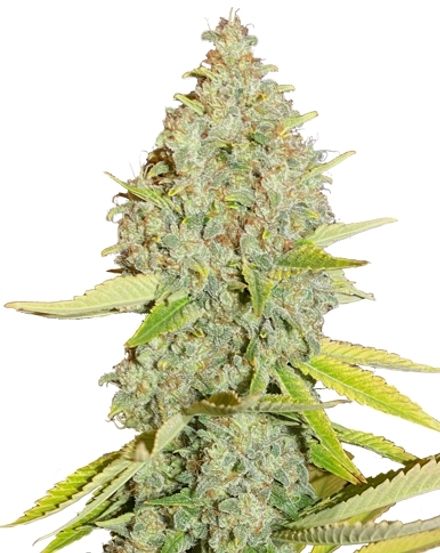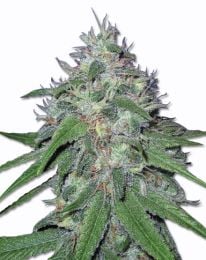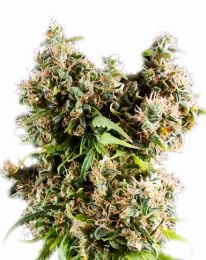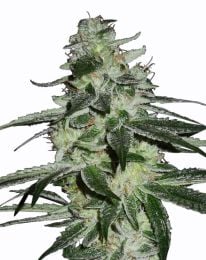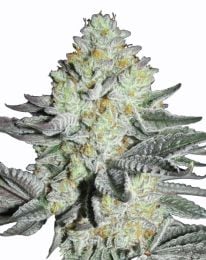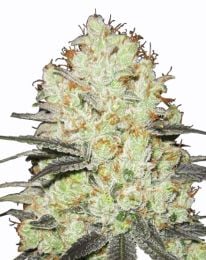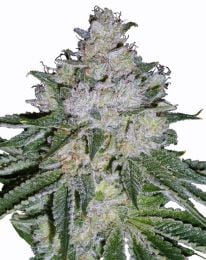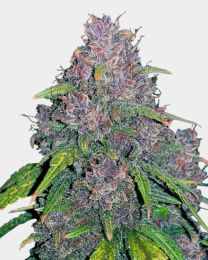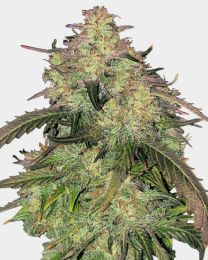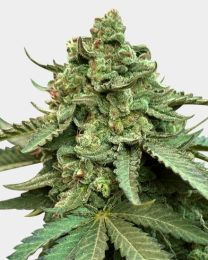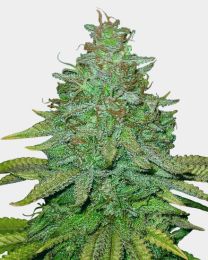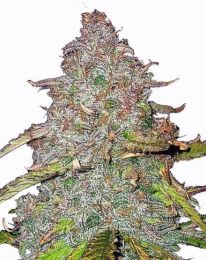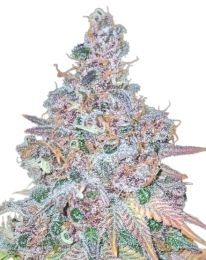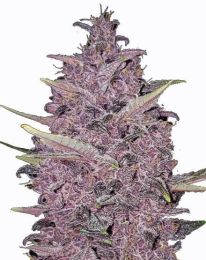Durban Poison Autoflower Seeds
- THC High - 20-24%
- Massive Yield - Up to 500gsm
- Sativa Dominant Ruderalis
- Flowering Time - 8 Weeks
- Autoflowering variant of the legendary landrace strain Durban Poison
- A big yielding, sativa dominant ruderalis that grows in as little as 12 weeks
STRAIN CHARACTERISTICS
| THC % | 20%-24% |
| Flowering Time | 8-10 Weeks |
| Outdoor harvest | October |
| Yield | 400-500gr/m² Test |
| Indica/Sativa | Sativa Dominant Ruderalis |
| Height | Short: 60cm-100cm |
| Difficulty | Easy |
| CBD Content | Under 1% CBD |
| Climate | Tropical, Sub Tropical, Warm, Arid, Mould Resistant |
| Medical Conditions | Depression, Pain, Stress |
| Seed Type | Autoflower Feminized |
| Genetics | Landrace Ruderalis |
| Effects | Creative, Energising, Uplifting |
| Taste | Spicy, Vanilla, Sweet |
| Terpene | Terpinolene , Myrcene , Ocimene |
STRAIN TRAITS
Durban Poison Autoflower Seeds Overview
Durban Poison. A name that resonates with stoners old and young, and one of the most celebrated Sativa landraces of all time. Well, thanks to advancements in cannabis breeding techniques, and a sprinkling of Ruderalis genetics, we are now proud to offer the very first autoflowering version of this beast of a cultivar!
One of the main reasons why many growers choose to skip pure Sativa strains is the fact the flowering period can take up to 14 weeks. Once you add in the veg growth time, that's around 20 weeks of growth.
Not here! Not only will Durban Poison Auto take just 8 weeks from seed to harvest, but this ridiculously potent auto offering also boasts up to 24% THC, a huge yield potential, and just straight-up uplifting Sativa goodness!
What are the effects of Durban Poison Autoflower weed?
If you have never had the chance to indulge in a pure sativa then you are in for a treat. The energizing, mind-expanding, and heady effects of Durban Poison Auto will have you up and about ready to take on the day.
Whether it's a creativity boost you're after, or just a mental pick-me-up, Durban Poison Auto will make sure you're not feeling lethargic or listless. Think of it as the opposite of what most TV shows will have you think weed does. No couch lock here, not at all. The combination of high THC and Sativa-Dominant effects will have you feeling energized, motivated, and buzzing with creative juiciness.
How to grow Durban Poison Autoflower seeds?
Sativa strains are somewhat infamous for being on the trickier side of the cultivation scale. Tall growing, nutrient thirsty, and with flowering times that can sometimes be twice as long as their Indica kin. But with Durban Poison Auto, growing is about as easy as it can be.
Thanks to the autoflowering genetics, the flowering period is a mere 8 weeks from seed to harvest, and you can expect above-average yields for an auto. Anywhere between 400-500g/m2 is anything but unusual for indoor crops, and outdoors you'll be looking at a minimum of one hundred grams per plant, maybe more.
One thing to keep in mind is that she does grow tall, especially for an auto. If you are used to growing smaller plants, you may need to make a few key adjustments. We never recommend topping autos (as they just don't have time to bounce back from the stress before flowering begins), but you can LST the bejesus outta Durban Poison Auto to reach those yield goals.
Durban Poison Autoflower strain appearance and aroma
Another reason why some growers seem to prefer Indica dominant genetics is the flower structure. Sativa cultivars have a reputation for being a little less dense, but that is just par for the course. Are you going to get rock-hard nugs with this strain? No, probably not, but what you will get is some of the most fragrant and flavorful buds you can find, with a more than decent density.
Durban Poison Auto flowers have a vibrant green color, which is often speckled with darker shades of olive/forest green and the occasional purple hue. The nugs are coated in rich trichomes and orange-tinted pistils, and many would say this is the closest you can get to a pure Sativa in terms of looks.
Smell-wise, Durban Poison Auto is exactly in line with its photoperiodic counterpart. That is, a sweet and earthy aroma with a hint of spice. Fans of the original Sativa strain will immediately recognize this scent, and it's one of the most classically stanky choices on offer today.
